Vietnam
EVN ties up with Japanese group for Vietnam nuclear plant
EVN ties up with Japanese group for Vietnam nuclear plant
A Japanese consortium and state utility Vietnam Electricity has signed an agreement to cooperate on the Ninh Thuan 2 nuclear power plant project in Vietnam.
Japan advances nuke plans with Vietnam
The Japan Atomic Energy Co agreed to conduct a feasibility study in building Vietnam's first nuclear power plant.
Vietnam explores possibilities in renewable energy
Vietnam has created development strategies to fully exploit the potential of renewable energy. According to HCM city power development plan 2011-2015 approved by the Ministry of Industry and Trade, by 2015, there will be two more power plants using energy produced from waste sources with a total capacity of 40 MW. The Department of Industry and Trade is studying to build a plant producing electricity from organic waste in three markets of Binh Dien, Thu Duc, Hoc Mon. Preliminary statistics have shown that each day, a large wholesale market emits about 50 tons of garbage, 95% of which is organic waste, suitable for the incubation to collect gas for generating power. Investment capital for a power-from-waste project in each market is estimated to be about USD 3-4 million. If these projects succeed, they shall not only provide power to the city but also helps wholesale markets save garbage collection cost--each market has to spend an average of VND 300 million per month on garbage collection. Department of Industry and Trade has also been collecting data on wind energy resources in Can Gio District to assess the viability of wind power in coastal areas of HCM city. As planned, Can Gio coastal areas such as Thanh An commune, Can Thanh town, Ly Nhon commune have favorable conditions for the development of renewable energy sources such as wind power, solar power. The World Bank has estimated that Vietnam could develop wind power on approximately 80% of the total area of the country (equivalent to 102 MW). Each year, Vietnam has about 2000 to 2500 hours of sunshine with the average radiation intensity of about 4.5 kWh/m2/day, equivalent to 43.9 million tons of oil equivalent per year. Data of Swedish Centec Vietnam Center show that investment reprots are being made on fourteen grid-connected wind power projects and seven projects are setting up construction plans. Solar cell systems have also been present in 38 provinces. According to Dr. Hoang Tien Dung, Director of the Institute of Energy - Ministry of Industry and Trade, Vietnam has various renewable energy sources with great potential but they have not been fully evaluated; it is necessary to investigate and supplement data, then proceed to planning and zoning these types of energy for rational investment and exploitation. Although the State has issued a number of mechanisms, policies and orientations for the development of renewable energy but in short term, there are many difficulties in developing renewable energy. There have been no available financial resources to support the users of heat, electricity produced from renewable energy, such as solar cell, solar water heater, and biomass; no support mechanisms for off-grid power produced from renewable energy; lack of investment in the assessment of potential and construction of database and lack of long-term funding for the program. Currently, the production cost of renewable energy has been lower than before but is still very high. For example, the production cost of one kilowatt of solar power is up to 18 cents, while coal power price, gas power price is only 5.1 to 5.2 cents per KWh. Therefore, to exploit the potential of renewable energy, there should be price support mechanisms.
Vietnam attracts clean energy investors
Vietnam has become the attractive destination for foreign clean energy investors with shortage in energy and willingness to develop clean energy sources.
Vietnam now the aiming point of clean energy investors
Lacking energy and wishing to develop clean energy sources, Vietnam has become the attractive destination for foreign clean energy investors. When announcing the project to build a solar panel factory in HCM City in March, the US First Solar group aims to make more profits with the low-cost solar cell technology, about 78 cent per watt. The project by First Solar to increase the capacity from 1.4GW to 2.7GW, which is expected to create 600 jobs in Vietnam, has the total investment capital of one billion dollars. IC Energy has also set up a solar panel factory in the Chu Lai Open Economic Zone with the investment capital of more than 390 million dollars. Meanwhile, German Roth&Rau has also invested 275 billion dong in a factory in the Hoa Lac High-Tech Park. A lot of other large-scaled wind power projects in Vietnam have also been kicked off. The 99MW wind power plant in Bac Lieu province has the total investment capital of 4500 billion dong. One of the biggest equipment suppliers of the project is the US-based GE Group. A project on wind power plant in Tra Vinh province has been developed by German EAB, which is expected to have the capacity of 30MW. Meanwhile, a project in Soc Trang is expected to have the capacity of 300MW when becoming operational. Meanwhile, sources say that the US Cenergy Power is moving ahead with the solar energy projects in the two islands of Cat Hai and Bach Long Vi. Investment funds jump into clean energy sector Of the 150 million euro worth of ODA (official development assistance) capital granted by the German government to Vietnam in 2010-2011, 33 percent of the capital will be poured into the energy sector and climate change. This has helped catch more attention from foreign investors when considering investment plans in Vietnam. Besides this, the market now has favorable conditions to develop, because a lot of investment funds which plan to funnel capital into the recycle energy sector have been established. A World Bank’s survey on the energy for Asia conducted in 2010, shows that Vietnam has great advantages to make wind power with the total potential capacity of 500,000 MW, which is 200 times higher than the capacity of Son La hydropower plant and 10 times higher than the forecast total electricity capacity to be reached by 2020. Vietnam has 8.6 percent of its area which is believed to have “good” and “very good” potentials to set up big-scaled wind power stations, and more than 40 percent of land in rural areas for small-scaled stations. Meanwhile, scientists have warned that Vietnam may meet big problems in the future, when the electricity consumption is forecast to increase by 20 percent, while the electricity output increases by 13 percent only. Indochina Capital has set up MRRF with the capital of 50 million dollars, a fund which plans to pour money into recycle energy and environment projects. The fund also plans to mobilize 150 million dollar worth of capital from other sources which will then be injected in wind, solar power plants, small hydropower plants and energy saving projects. Prior to that, Dragon Capital announced the establishment of the regional Mekong Brahmaputra fund which specializes in making investment in recycle energy, clean water production and waste treatment. To date, 45 million dollars worth of capital has been mobilized from financial institutions such as FMO, ADB, Finnfund and BIO, while the capital is expected to increase to 100 million dollars this year. IFC and Norwegian SN Power have also agreed on the establishment of InfraVentures which specializes in seeking investment opportunities in recycle energy projects. For the last many years, IFC has been well known as a big investor in energy saving and clean production sectors.
Ho Chi Minh City cuts down electricity use by 2.7%
Ho Chi Minh city has saved more than 232.8 million kWh of electricity, equivalent to VND 325.7 billion, in the first seven months of the year.
Bangladesh braces for power price hike in winter
Dhaka Electricity Supply Co Ltd (DESCO) and West Zone Power Distribution Co Ltd have sought the Bangladesh Energy Regulatory Commission (BERC) approval to their proposals for a hike in retail power tariffs. In the proposals, up to a 21.94 per cent tariff hike in the city areas and around an 18.99 per cent increase in tariffs for 21 districts in the south-western region have been mooted. If the DESCO and West Zone Power proposals were cleared, the average retail power tariff per unit (Kilo Watt Hour) would stand at Tk. 5.28 as against the present Tk. 4.33 in the city and the tariff for south-western districts would increase from the present Tk. 4.53 to Tk. 4.77. The proposals were discussed thoroughly at an open meeting of the commission chairman, members and stakeholders, held at the BERC office here on Sunday. The DESCO had submitted its proposal to BERC on June 19, 2011 for a 13.16 per cent retail tariff hike while the West Zone Power proposal, submitted on June 20, sought a 13.11 percent hike. Later, in August this year, the DESCO revised its proposal and sought a 21.95 per cent hike in tariff. On August 2, West Zone Power sought an upward revision of its tariff hike proposal at 18.99 per cent. Incidentally, on February 8, 2011, the BERC had for the last time raised tariffs for bulk and retail electricity by 11 and 5 per cent, respectively, with retrospective from February 1. BERC chairman Syed Yusuf Hossain said end-users, ranging from domestic consumers to industrial entrepreneurs, would be saddled with an extra burden if the two proposal wee cleared. The open discussion on the proposals was organised by the commission at its Karwan Bazaar office in the city. Hossain said common people could not cope with the additional inflationary pressure as the prices of essential commodities had already gone beyond their reach due to an increase in energy and fuel prices in recent months. He urged DESCO and West Zone Power to be guided by their own judgments before proceeding to seek an increase in retail power tariffs, especially at a time when the country’s economy is facing a sharp fall in the balance of payments and a liquidity crunch. “Wide inflation has already kept the government under pressure. A fresh hike in power tariffs would only worsen the situation. As it is, we are being condemned by people for allowing your tariff hike proposals to be discussed. Is it not embarrassing for us?,” Hossain said while he was delivering a speech at the discussion. When DESCO and West Zone Power officials present at the meeting cited the rising cost of distribution as a reason for seeking a fresh tariff hike, Hossain advised them to revise their proposal downwards and take other effective measures. The other measures included reducing system loss, preventing illegal tapping of power, improving distribution services and going for viable expansion in case of new connections. Time has come to categorise the domestic consumers, Hossain said adding, since moneyed people enjoy luxurious living in air-conditioned residents at the same tariff rate the low-income group people pay for their power consumption. Meanwhile, the commission has announced that it would hear the DESCO proposal on October 20 and take up the West Zone Power proposal on October 24. During the February 2011 tariff hike announcement, the commission had said that the hike would not be applicable to domestic consumption of electricity between 1-100 units monthly, irrigation and non-residential (religious, social and educational institutions) connections. The commission chairman had then said the tariff increase for bulk power (11 per cent) would be implemented in two phases on July 31 and from August. He had also said the commission would set a ceiling on the tariff hike, at five per cent over the previous per unit rate of Tk. 4 (prevailing before February 2011), for retail consumers. Incidentally, last month, BERC rejected a tariff-hike proposal of the Rural Electrification Board. Similar proposals moved by Dhaka Power Distribution Co Ltd and Power Development Board are under the consideration of the commission.
Vietnam power price to be adjusted by input parameters
The mechanism to adjust Vietnam's electricity price will based on the monthly calculation and examination of the volatility of fundamental input parameters in comparison with parameters in use to determine the current electricity price.
Chinese firm heeds protests to stop Cambodian hydro projects
Two Chinese state-owned companies held back from their investment projects in Cambodia under public pressure.
Vietnam's massive hydropower development stirs environmental fears
Vietnam’s uncontrollable construction of hydroelectric projects had reached a crisis point that has sparked environmental fears.
AES taps 14 financers for $1.5B Vietnam coal-fired plant
AES has closed a $1.5 billion long-term non-recourse construction financing from 12 commercial banks and two Korean government export credit agencies for its 1,200MW Mong Duong II coal-fired power plant.
Japan, Vietnam restart nuclear tech talks in September
The governments of Vietnam and Japan will restart discussions in September on the provision of Japanese nuclear power technology to the Southeast Asian nation.
Vietnam power sector to need annual investments of over US$6 B
Under the plan recently approved by the Prime Minister, electricity price shall be gradually adjusted according to market mechanism and is expected to be 8-9 cents per kWh in 2020. It is currently at about 6 cents per KHh.
Price of electricity in Vietnam to be adjusted monthly
Vietnam Electricity plans to adjust its monthly pricing based on fluctuating costs such as US dollar exchange rate, changing fuel prices, and also the power output level from its plant.
Malaysia's Jaks to build Vietnam coal-fired plant
Jaks Resources Bhd is expected to start construction of its 1,200 MW coal-fired power project worth US$2 billion in Hai Duong province, Vietnam, in the second quarter of 2013.
Indochina to amp up investments in thermal and hydro power projects
Vietnam, Cambodia and Laos are planning for significant investment increases in their electricity generation capacity in order to keep pace with the rising demand.
GE’s new capacitor banks to improve power efficiency in Vietnam
The Fixed Series Compensation system delivers higher efficiency by increasing the capacity of the existing power line infrastructure.
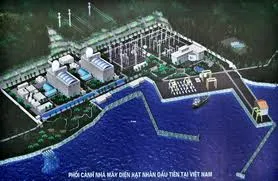
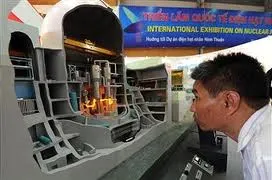
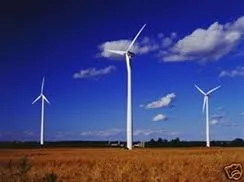
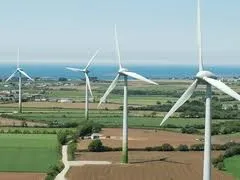
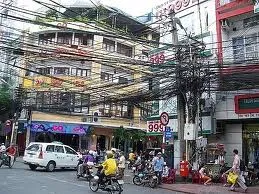
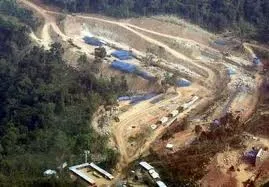
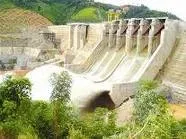

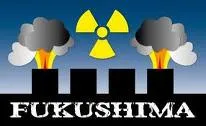
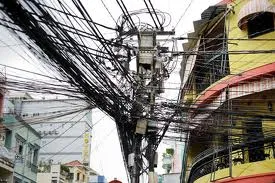
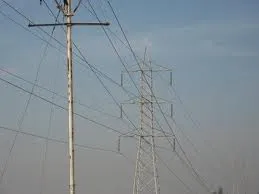
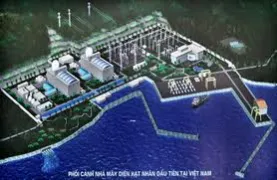
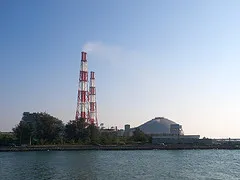

 Advertise
Advertise














Commentary
How pump retrofits boost profitability and efficiency in ageing power plants